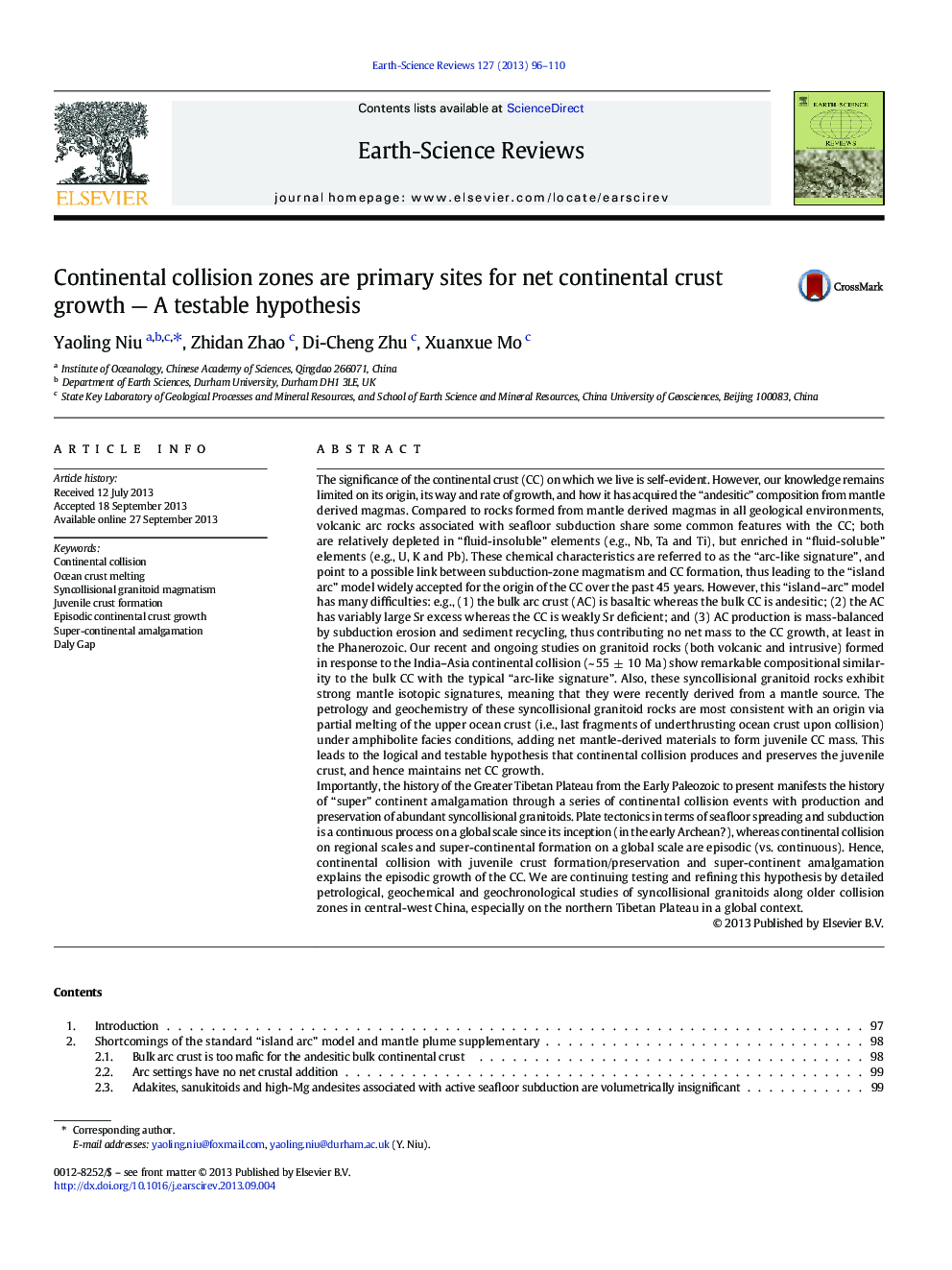| کد مقاله | کد نشریه | سال انتشار | مقاله انگلیسی | نسخه تمام متن |
|---|---|---|---|---|
| 4725782 | 1639975 | 2013 | 15 صفحه PDF | دانلود رایگان |
The significance of the continental crust (CC) on which we live is self-evident. However, our knowledge remains limited on its origin, its way and rate of growth, and how it has acquired the “andesitic” composition from mantle derived magmas. Compared to rocks formed from mantle derived magmas in all geological environments, volcanic arc rocks associated with seafloor subduction share some common features with the CC; both are relatively depleted in “fluid-insoluble” elements (e.g., Nb, Ta and Ti), but enriched in “fluid-soluble” elements (e.g., U, K and Pb). These chemical characteristics are referred to as the “arc-like signature”, and point to a possible link between subduction-zone magmatism and CC formation, thus leading to the “island arc” model widely accepted for the origin of the CC over the past 45 years. However, this “island–arc” model has many difficulties: e.g., (1) the bulk arc crust (AC) is basaltic whereas the bulk CC is andesitic; (2) the AC has variably large Sr excess whereas the CC is weakly Sr deficient; and (3) AC production is mass-balanced by subduction erosion and sediment recycling, thus contributing no net mass to the CC growth, at least in the Phanerozoic. Our recent and ongoing studies on granitoid rocks (both volcanic and intrusive) formed in response to the India–Asia continental collision (~ 55 ± 10 Ma) show remarkable compositional similarity to the bulk CC with the typical “arc-like signature”. Also, these syncollisional granitoid rocks exhibit strong mantle isotopic signatures, meaning that they were recently derived from a mantle source. The petrology and geochemistry of these syncollisional granitoid rocks are most consistent with an origin via partial melting of the upper ocean crust (i.e., last fragments of underthrusting ocean crust upon collision) under amphibolite facies conditions, adding net mantle-derived materials to form juvenile CC mass. This leads to the logical and testable hypothesis that continental collision produces and preserves the juvenile crust, and hence maintains net CC growth.Importantly, the history of the Greater Tibetan Plateau from the Early Paleozoic to present manifests the history of “super” continent amalgamation through a series of continental collision events with production and preservation of abundant syncollisional granitoids. Plate tectonics in terms of seafloor spreading and subduction is a continuous process on a global scale since its inception (in the early Archean?), whereas continental collision on regional scales and super-continental formation on a global scale are episodic (vs. continuous). Hence, continental collision with juvenile crust formation/preservation and super-continent amalgamation explains the episodic growth of the CC. We are continuing testing and refining this hypothesis by detailed petrological, geochemical and geochronological studies of syncollisional granitoids along older collision zones in central-west China, especially on the northern Tibetan Plateau in a global context.
Journal: Earth-Science Reviews - Volume 127, December 2013, Pages 96–110
